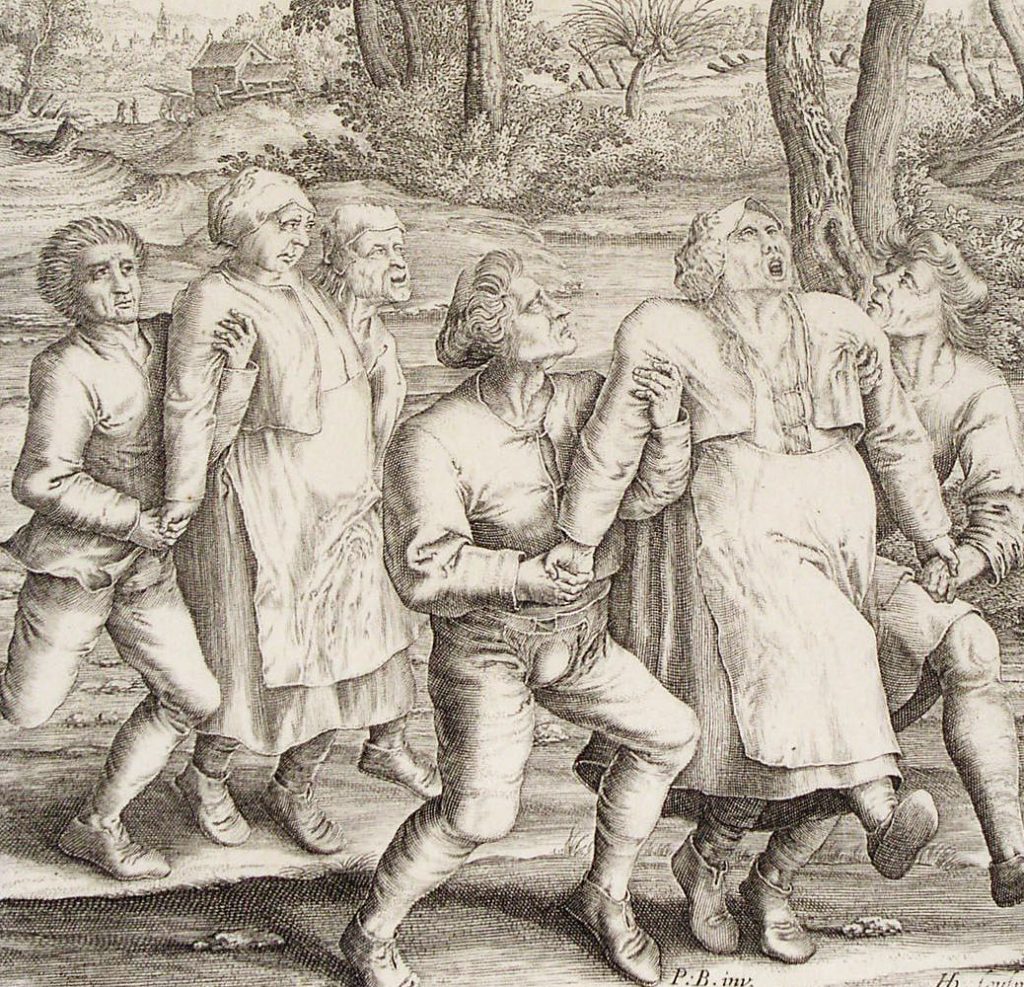In the sweltering summer of 1518, the streets of Strasbourg witnessed one of history’s most bizarre and terrifying events. A woman named Frau Troffea stepped into the street and began dancing feverishly, her movements wild and uncontrolled. What started as one person’s strange behavior soon evolved into a devastating phenomenon that would grip the entire town.
Within days, dozens of people joined this macabre dance, their bodies moving in an endless frenzy. The numbers grew at an alarming rate, and by August, nearly 400 citizens were caught in this mysterious dancing fever. Many danced until they collapsed from exhaustion, while others continued until their feet were bloodied and their bodies gave out.

A historical illustration depicting the dancing plague phenomenon. Credit: Wikipedia
Local authorities were baffled by this unprecedented crisis. Initially, they believed more dancing would cure the affliction and constructed wooden stages in public spaces. Musicians were brought in to play music, thinking this would help the dancers exhaust themselves more quickly. These attempts to manage the situation tragically backfired, leading to more deaths from heart attacks, strokes, and sheer exhaustion.

Procession of dancers affected by the plague. Credit: The Public Domain Review
The dancing plague spread like wildfire through medieval Strasbourg, affecting people of all ages and social classes. The city’s physicians were powerless to stop it, watching helplessly as their patients danced themselves to death. Some victims reportedly danced for days without rest, begging for help as their bodies refused to stop moving.
Modern historians and medical experts have proposed various theories to explain this mass phenomenon. Some suggest it was a case of mass hysteria, triggered by the extreme stress of famine and disease that plagued the region. Others point to the possibility of ergot poisoning, a fungus that grows on rye and can cause hallucinations and convulsions.
The social conditions of 1518 Strasbourg created the perfect storm for such an outbreak. The region was suffering from severe food shortages, religious tensions, and a series of natural disasters. These stressors, combined with the medieval belief in supernatural curses, might have contributed to the community’s psychological breakdown.
The Dancing Plague of 1518 remains one of the most well-documented cases of mass hysteria in history. It serves as a fascinating example of how psychological and social pressures can manifest in extraordinary ways. While similar outbreaks occurred in medieval Europe, none reached the scale or claimed as many lives as the Strasbourg incident.
References:
Dancing Plague of 1518 – Wikipedia – link
What Was the Dancing Plague of 1518? – History – link
The Dancing Plague of 1518 – The Public Domain Review – link
Categories: Do you know, Historical Mysteries, Mass Hysteria, Medieval History, Unexplained Phenomena
Tags: Dancing Plague, Historical Mysteries, Mass Hysteria, medical history, Medieval History, Strasbourg, unexplained phenomena
Religion: Christianity
Country of Origin: France, Germany
Topic: Historical Mystery
Ethnicity: European

